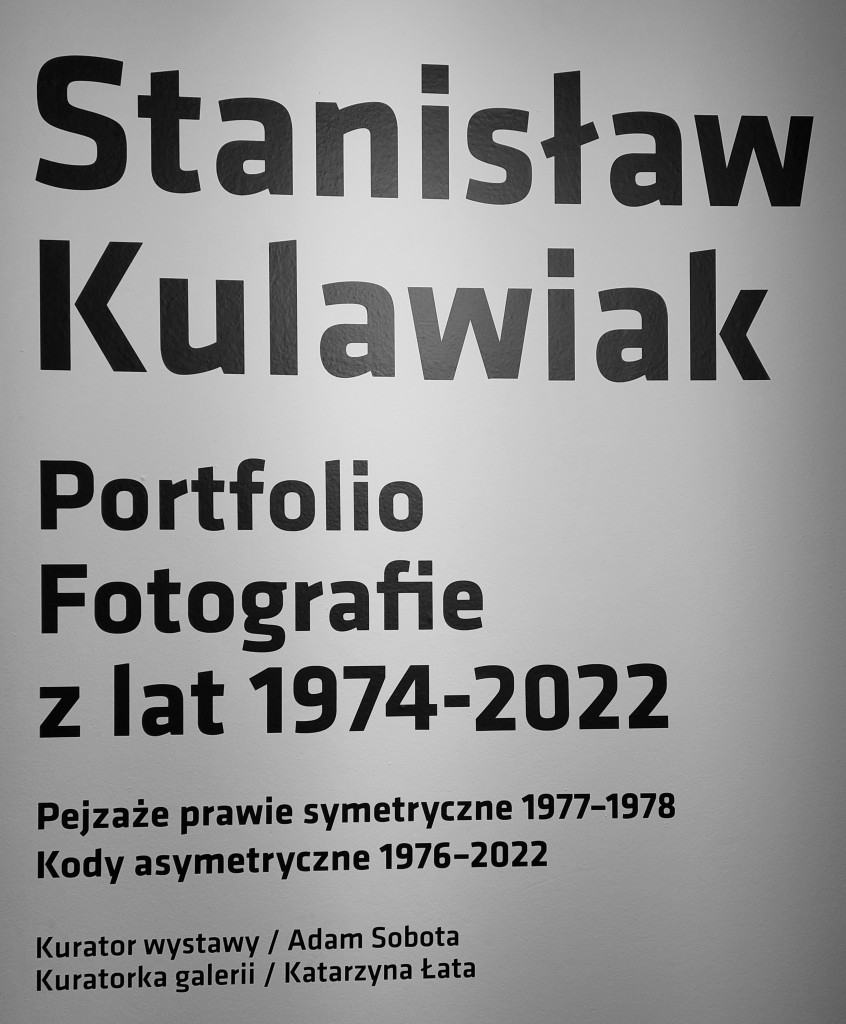Katowice retrospective of Stanislaw Kulawiak, or 50 years with photography

A photographer from Ostrzeszów for more than 40 years, born in 1954, who made his debut as a photojournalist in 1974 while studying at the AGH University of Science and Technology in Cracow, he was admitted to ZPAF in 1980, to return permanently to his hometown, Bobrowniki nad Prosną, after December 13, 1981, where he started a family and from where he set out on the long road to today's photographic possession, working also for the environment in the Lower Silesian Branch of ZPAF and in the Artistic Council at the Main Board. Before he became a nationally known documentary photographer on the periphery of communist Poland, he first ran the Student Photo Agency in Cracow, and then together with friends founded the SEM Creative Group and the Lizard Gallery of Photography.

S. Kulawiak's Katowice exhibition Portfolio. Photographs from 1974-2022, was presented at the Empty Gallery and was a kind of retrospective and an opportunity to recall the artist's creative path during the finale. It is worth mentioning at this point that the Empty Gallery was founded in 1993 and was run from the beginning until 2010 by Jakub Byrczek. Currently, Katarzyna Łata is the curator of the gallery. The gallery is located in the building of the Katowice City of Gardens Cultural Institution named after Krystyna Bochenek on Sejmu Śląskiego Square. Adam Sobota, the curator of the exhibition, wrote about the author's work as such, but also about the works shown at the Empty Gallery:
In his photographic work, Stanislaw Kulawiak developed a strategy in which he combined his passion for documenting social life in Poland with capturing the ethos of family relations, as well as exploring the media specificity of photography. He experimented with the form of media during his studies at the AGH University of Science and Technology in Cracow, when he founded the creative group SEM (1976-1981), with which he realized photographic installations in public spaces dedicated to the problems of communist everyday life and ecology. After 1981, he returned to his hometown of Ostrzeszow and continued - which has now lasted half a century - to document characteristic phenomena of social life in the country. In doing so, he paid special attention to the functioning of his own family and the environment in which he grew up. After his student period, he decided to stay with the classical principles of creating and presenting his works. Their documentary value goes hand in hand with a deeply considered formal side, so that their meaning is not closed in the category of photojournalism. The author recognizes the ambiguity and universality of various phenomena, and even invokes the concept of symmetry as a general rule for perceiving and learning about the world. Thus, he fits into the most widely appreciated trend of photography, where personal interpretation and objective conditions mutually support each other's rationale.

One could see all this on March 30, during the finissage of the exhibition with the participation of Katarzyna Lata, Zbigniew Podsiadlo and representatives of the Katowice photographic community. The exhibition of works, which were created from medium- and large-format negatives shown by Kulawiak at the Empty Gallery, covered only the beginnings of the 1970s documentary (Landscapes almost symmetrical 1977-1978) and a review of the most important frames forming the current of reflective, personal and ecological documentary. The author talked about his activity within the documentary and social reportage from 1974-2022 during a separate meeting (after the finissage), showing dozens of archival photos on the big screen, presenting a selection of the most interesting photographs from the album On the periphery of communist Poland and very interestingly telling about the times of his own photographic youth (the Cracow period of rebellion, artistic friendships, first successes and workshop self-improvement), which ended with the declaration of martial law and return to the gray reality in Bobrowniki and Ostrzeszów, filled with physical work (carpenter craftsman) and family responsibilities. Years later, when the artist's housing and financial situation stabilized enough for him to think about returning to his own photographic activity and animating photography-related activities for the benefit of the local, Ostrzeszow environment, Oficyna Wydawnicza KULAWIAK (a family business) was established, and the Regional Documentation Center Association began its activities TOWER 1916.

This, the studio part of the finissage meeting, received by the Katowice audience with applause and words of appreciation, but also with expressions of respect and surprise at all that falls under the term: content, facts, artistic path and, finally, the photographic biography of Stanislaw Kulawiak - made the participants of the meeting aware (under which the writer of these words subscribes), how little we sometimes know about people from our immediate environment, whose achievements in our common consciousness are often limited to a few exhibitions, a few catalogs and one book-album collecting the photographic achievements of a lifetime. This state of affairs was best summarized after the meeting by Zbigniew Podsiadlo (who, like the hero of the evening, has 50 years of experience in the field of photography), who said: Stanislaw, I thought I knew everything about you, but now I see how wrong I was!. Snapshots from the meeting can also be found on Kulawiak's FB. Link below: https://www.facebook.com/photo?fbid=725618125696357&set=pcb.725619372362899
Text and photos: author











